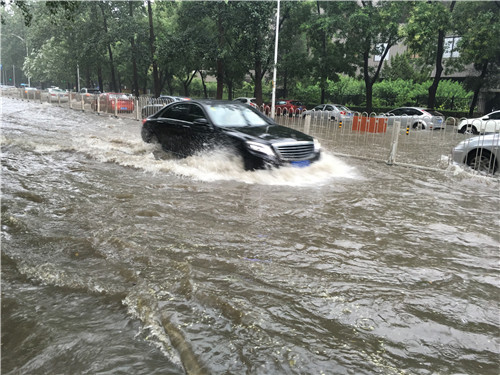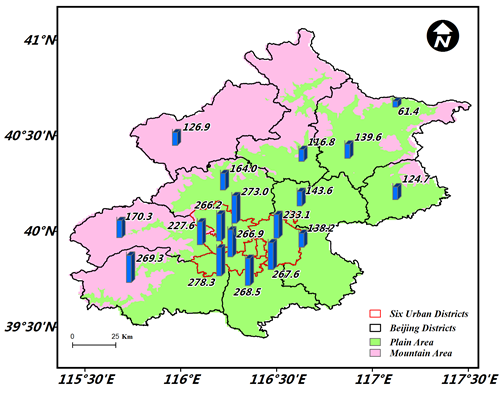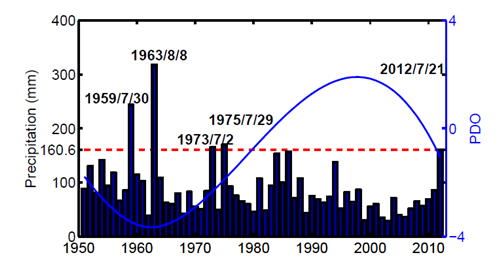Heavy Rains Hit Beijing on 20 July 2016:Coincident or Expected?
Date:2016-07-22
Beijing received about 196.4 mm of precipitation, averaged from 18 stations, during the period 20:00, 19 July-20:00, 20 July 2016 (Figure 1). This is much larger than last unusually torrential rains (about 170 mm of precipitation averaged from multi-stations) in Beijing, during 21st July 2012, which caused dozens of deaths and an economic loss of more than 10 billion RMB, being well-known to the world as the "Beijing 7–21 event".

Heavy rains hit Beijing on 20 July (Credit: JIN Ling)
Is it just a coincidence?
A research group (PEI Lin, XIA Jiangjiang, YAN Zhongwei and YANG Hui) at the Institute of Atmospheric Physics, Chinese Academy of Science, studied the occurrence probability of extreme rains in North China in association with the Pacific Decadal Oscillation (PDO), one of the most influential oceanic oscillations in the climate system. Via statistical analysis of long-term precipitation observations, they suggested that PDO should have influenced the changing likelihood of local torrential rains in North China. During the last 50 years, there were five extreme events with daily precipitation records equal to or larger than 160.6 mm (i.e., the level of the Beijing 7-21 event) at Beijing station (54511); all of these extreme events happened during the negative phase of PDO (Figure 2).
The calculation indicated that such extreme events should happen once in less than a decade during the negative phase of PDO, with the possibility of once every 5 years; but only about once every four decades during the positive phase of PDO. The negative phase of PDO was also found to be associated with a greater probability of extreme southerly winds in summer over North China, which is favorable for the occurrence of extreme rains over North China.

Figure 1. The distribution of the observed precipitation (units: mm) of 18 Beijing Stations during the period 20:00, 19 July-20:00, 20 July 2016. The precipitation records are from the China Daily Ground Dataset, which is produced routinely at the National Meteorological Information Center of the China. http://data.cma.cn/site/index.html (Figure plotted by ZHENG Ziyan, IAP)

Figure 2.Time series of the maximum one-day precipitation during summer in Beijing station for the period of 1951–2012, unit: mm. The red dashed line denotes the precipitation level of the Beijing 7–21 case (e.g. 160.6 mm). The blue line is multidecadal variability of the PDO index.
Recent studies showed that PDO has shifted from a positive to negative phase during the last decade. Thus, it is expected that in the coming decades, North China would suffer from extreme rains such like the Beijing 7-21 event once in every few years.
Therefore the heavy rains on 20 July 2016, attacking Beijing almost four years after “Beijing 7–21 event” in 2012, might not be a coincidence or an individual event, after all.
This study has recently been published at Climatic Change.
Reference:
Pei Lin, Xia Jiangjiang, Yan Zhongwei and Yang Hui, Assessment of the Pacific Decadal Oscillation’s contribution to the occurrence of local torrential rainfall in North China. 2016. Climatic Change. DOI 10.1007/s10584-016-1610-8. http://link.springer.com/article/10.1007/s10584-016-1610-8
Contact: YAN Zhongwei, yzw@tea.ac.cn
